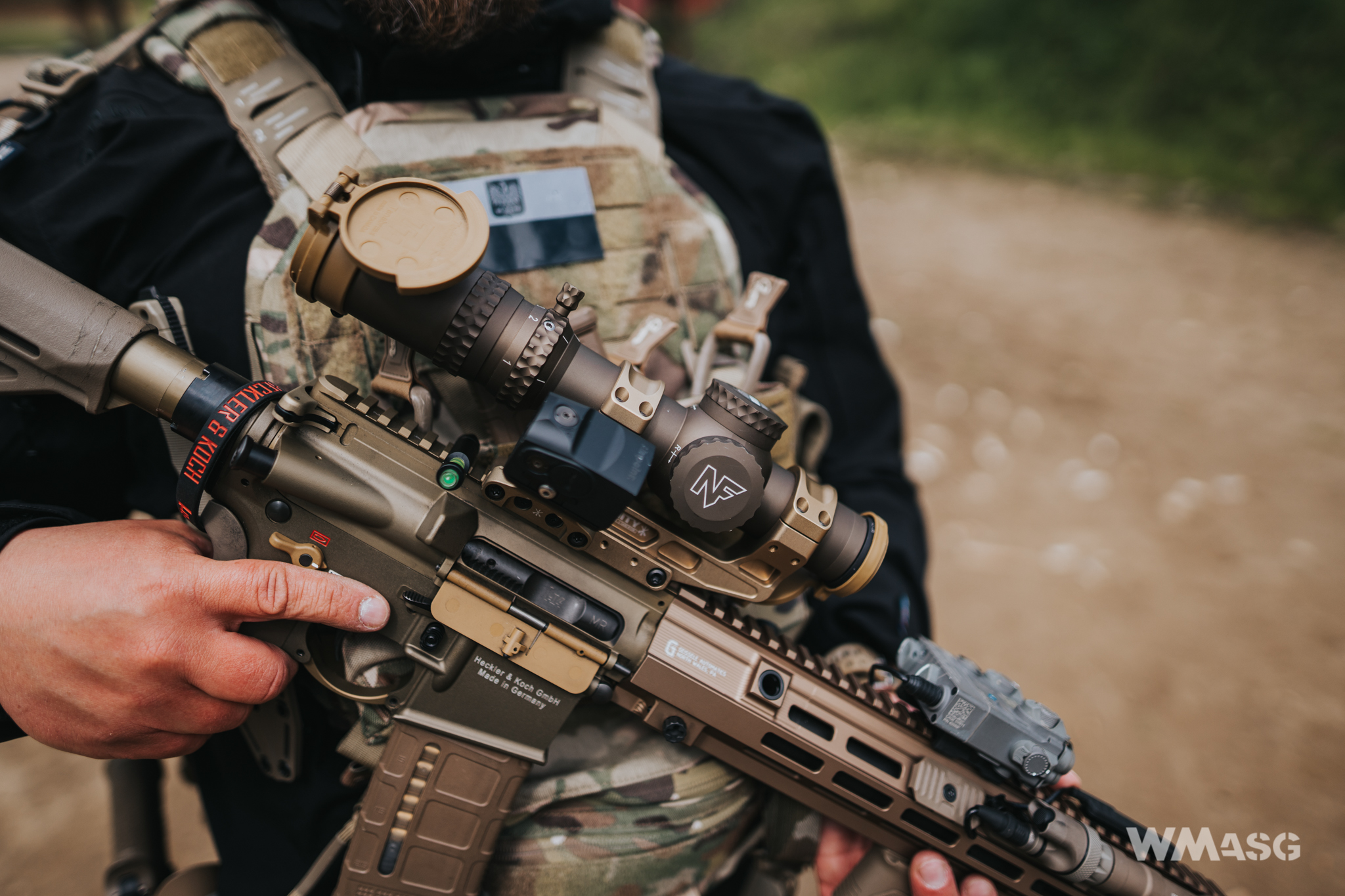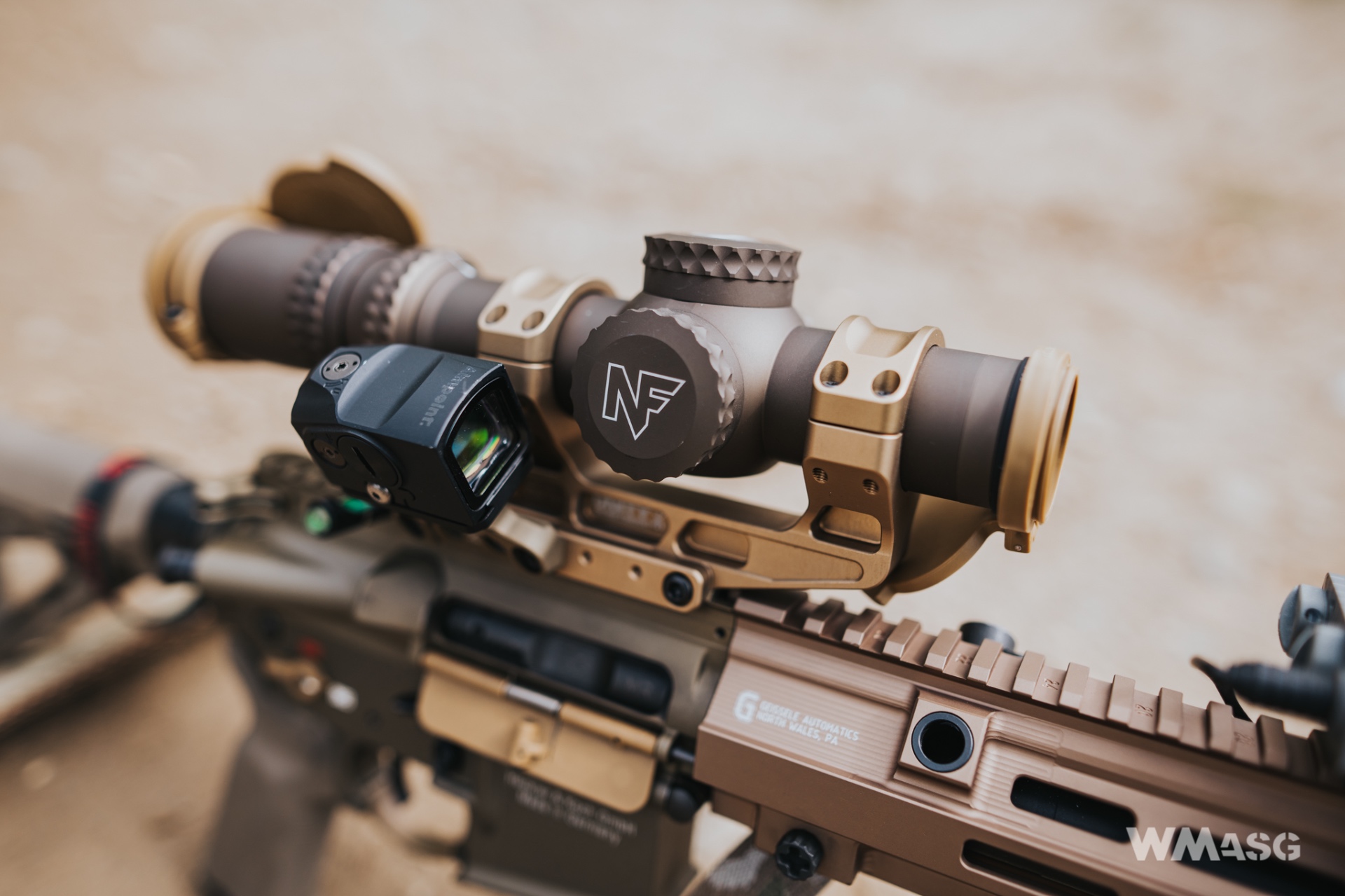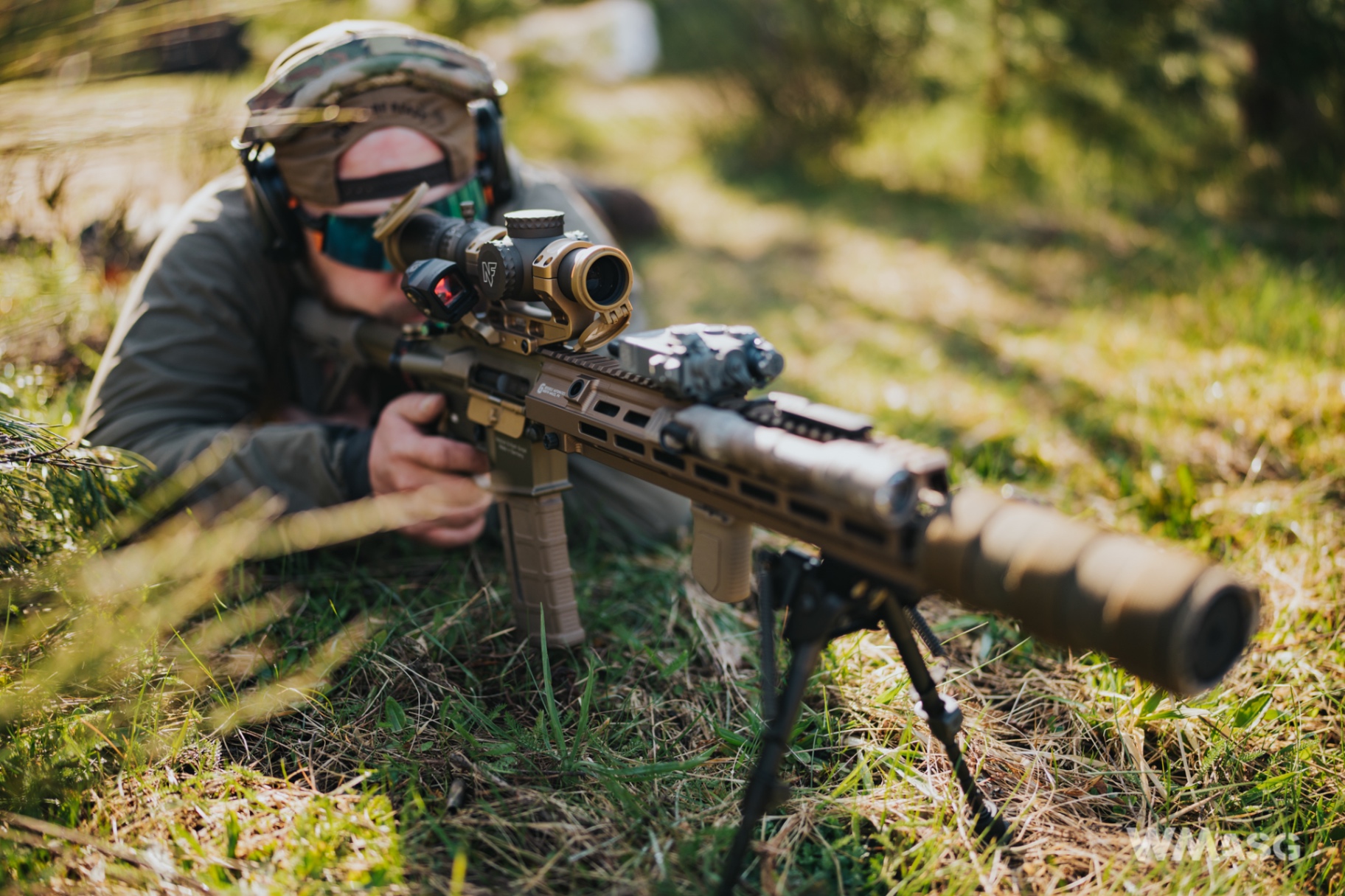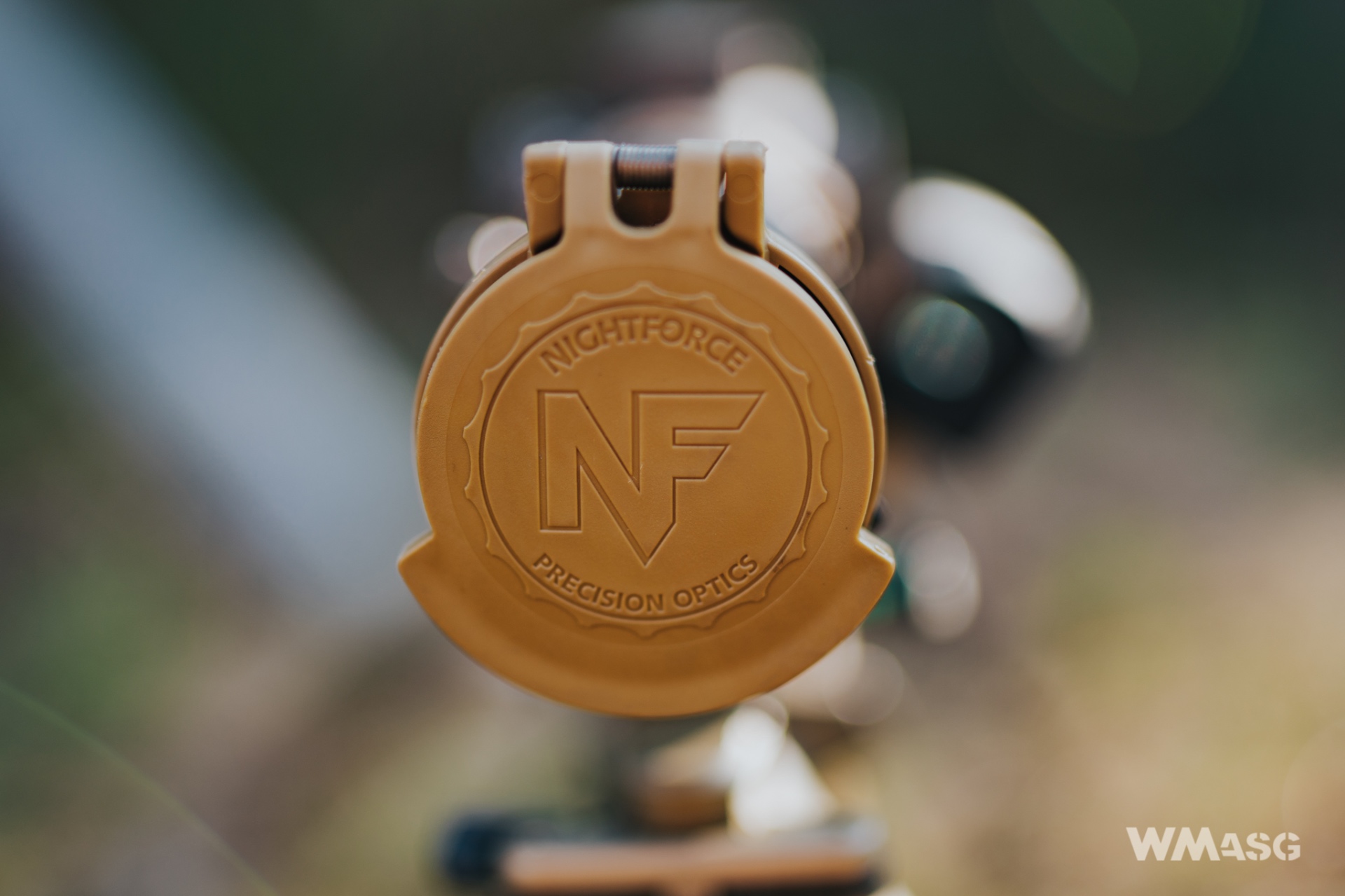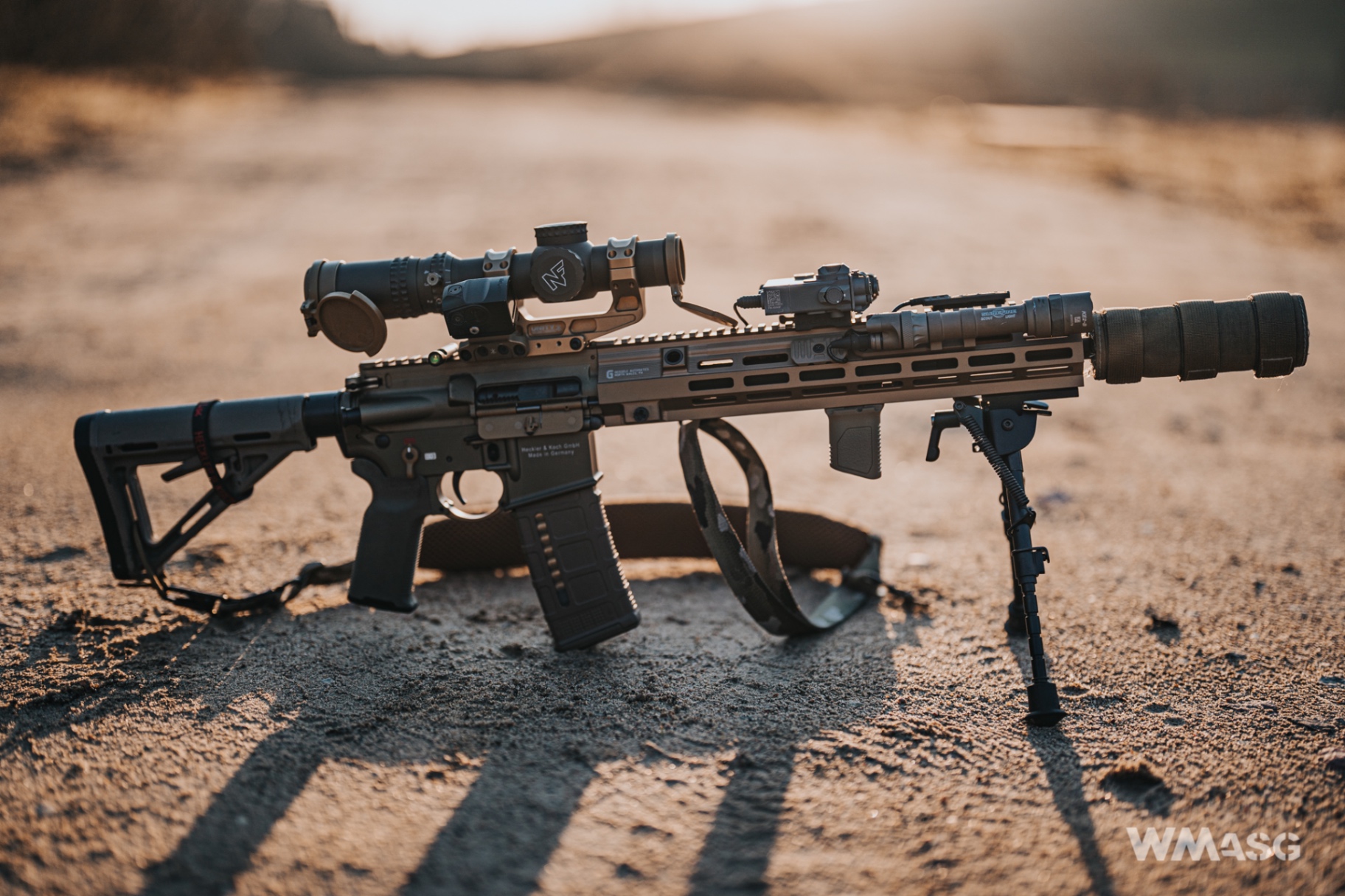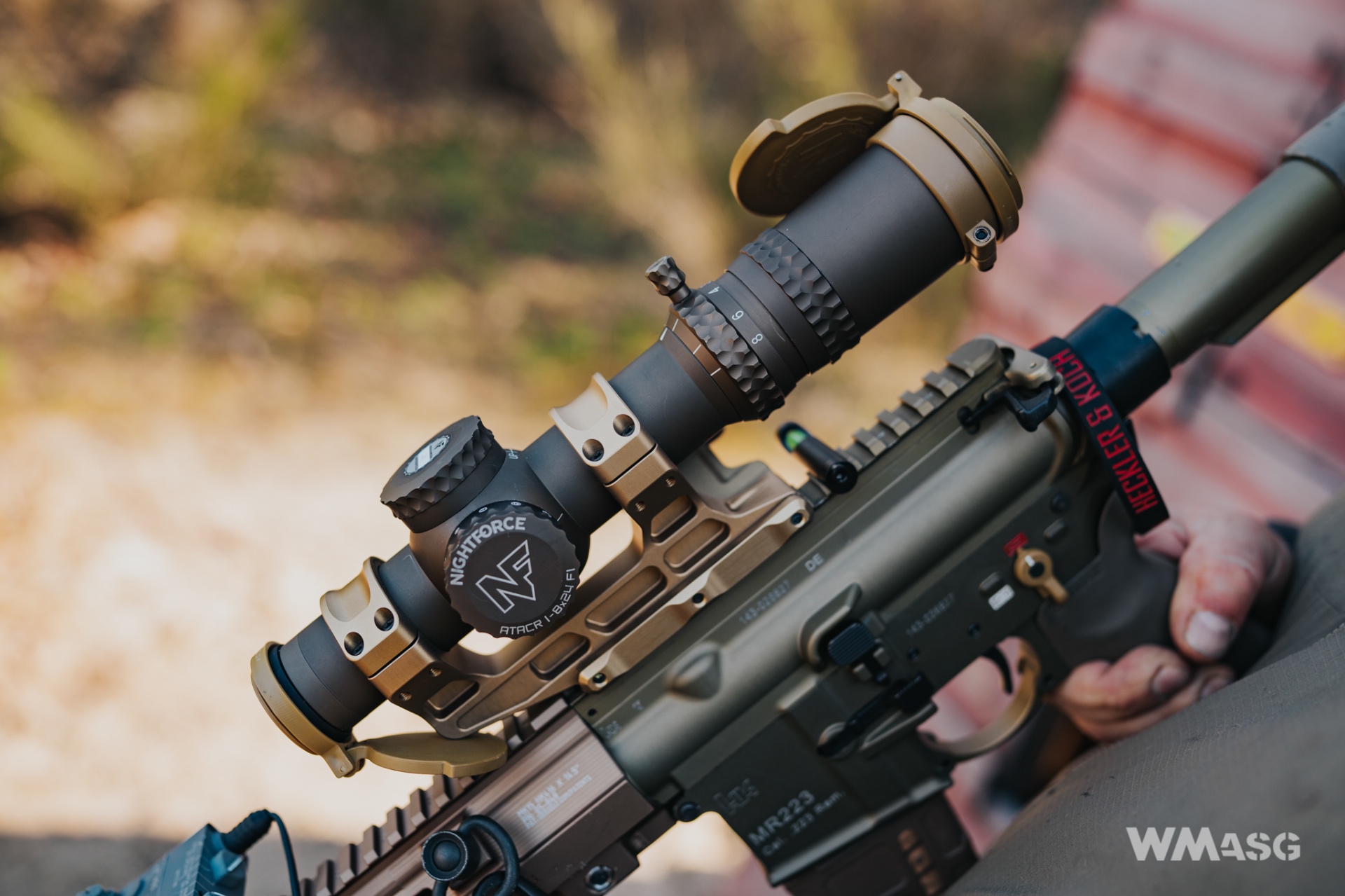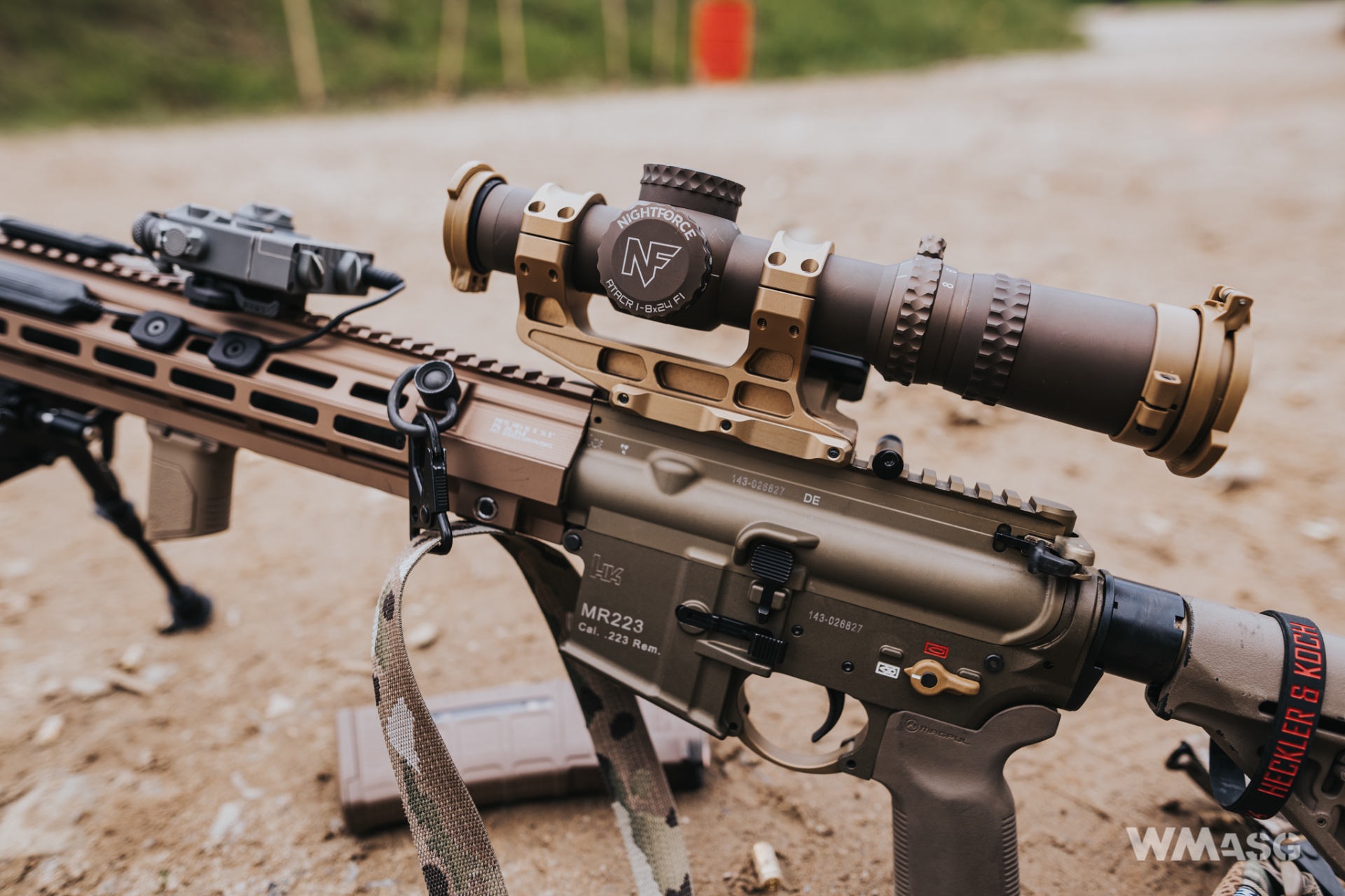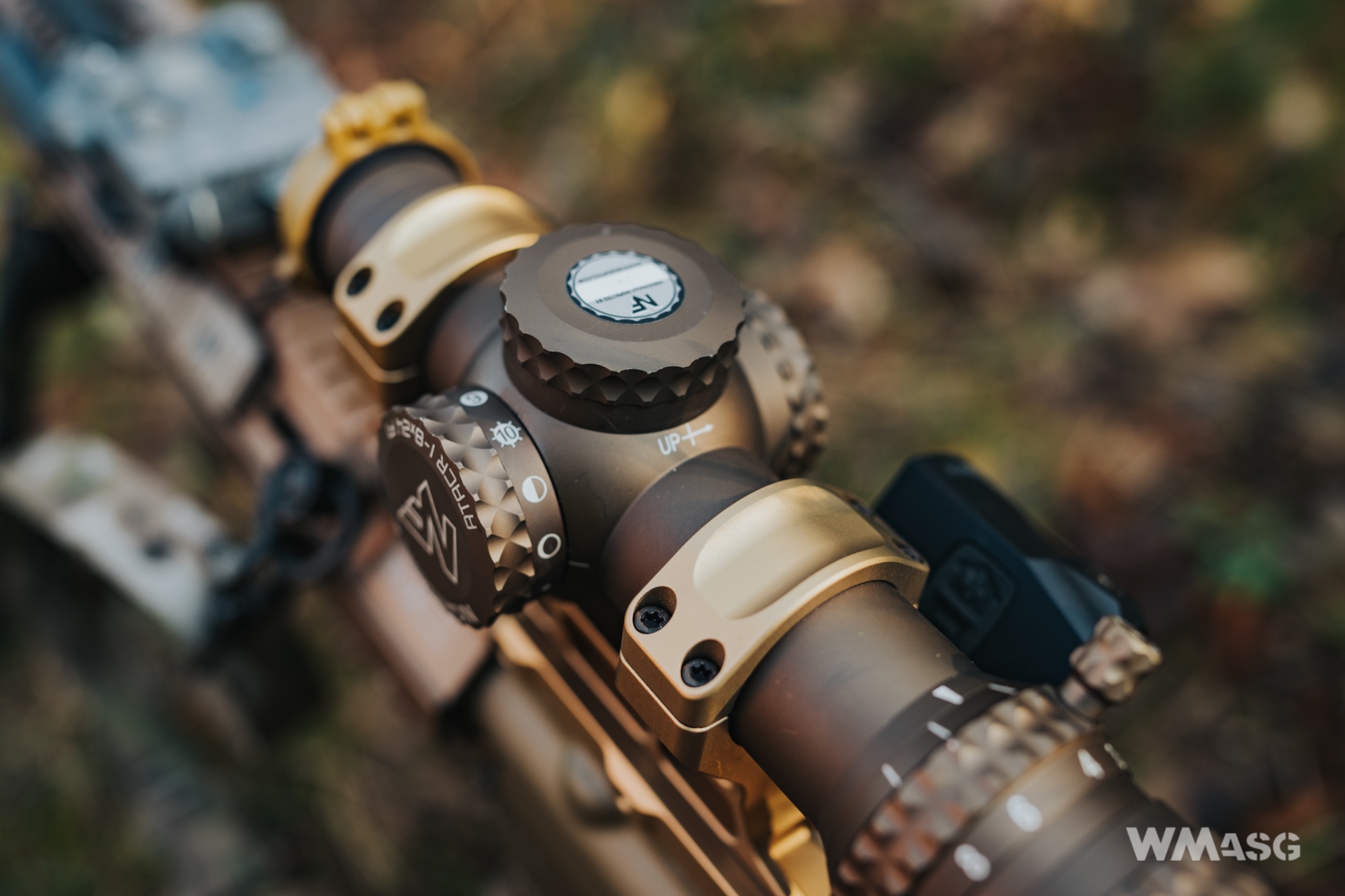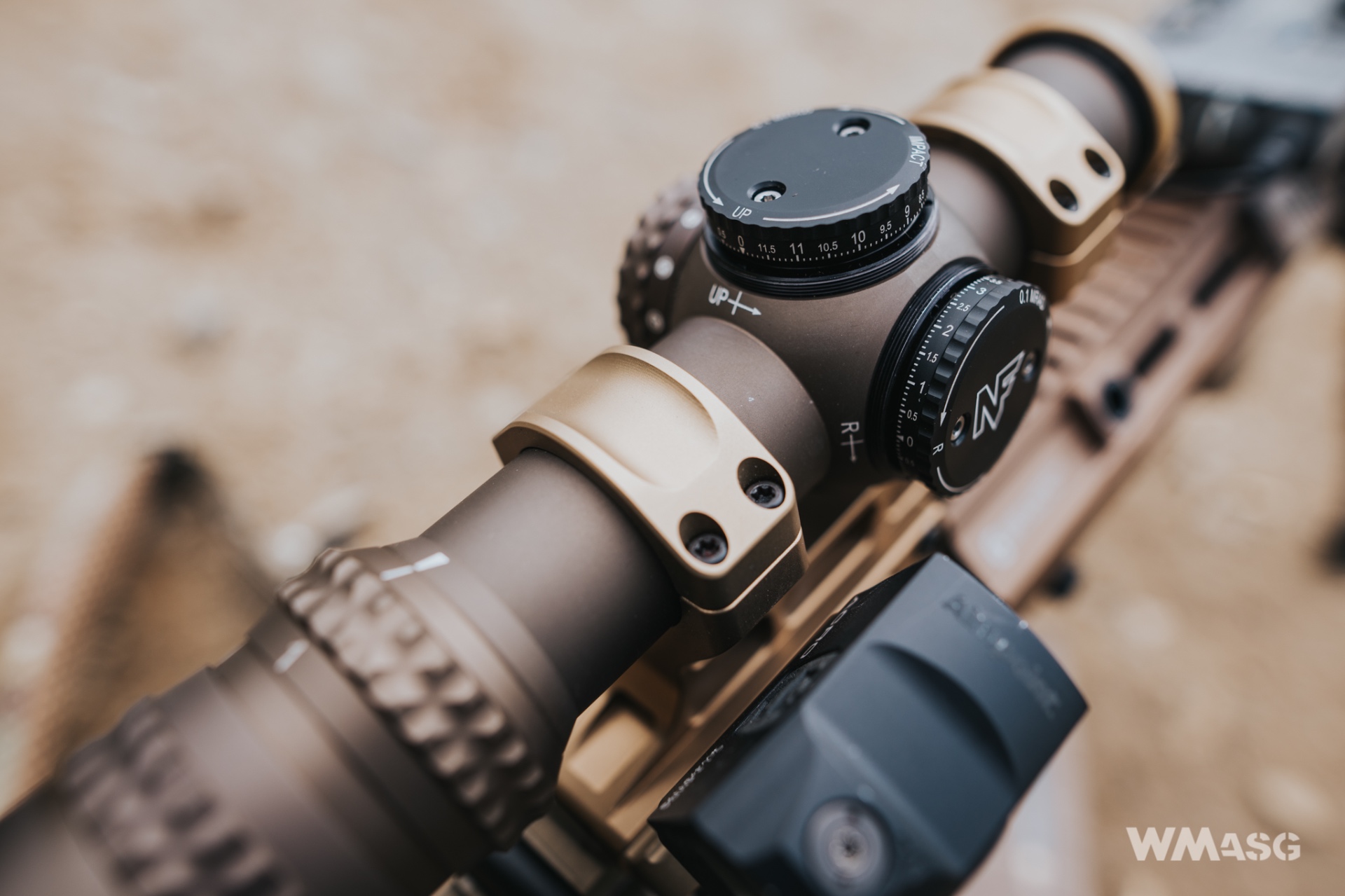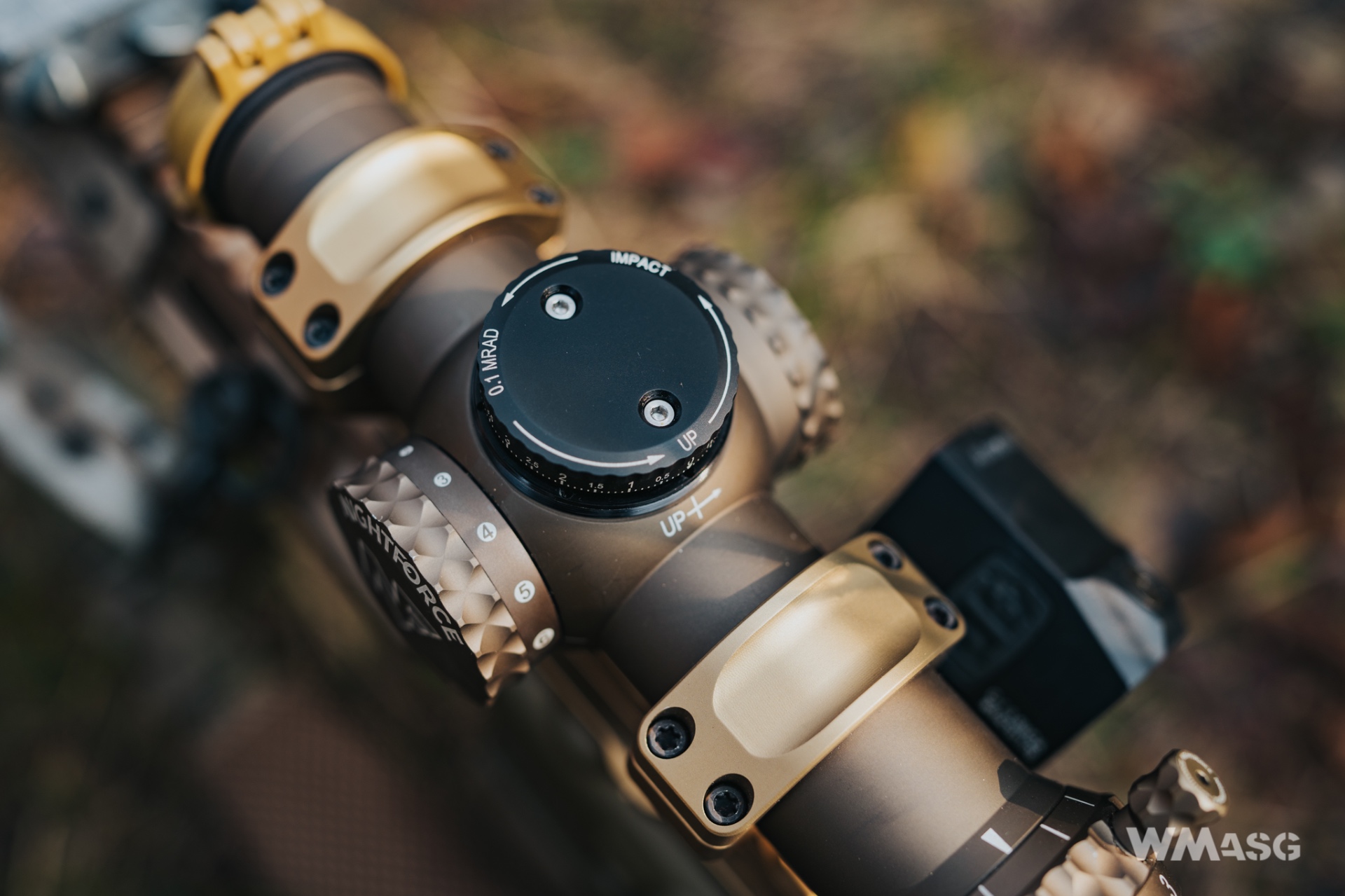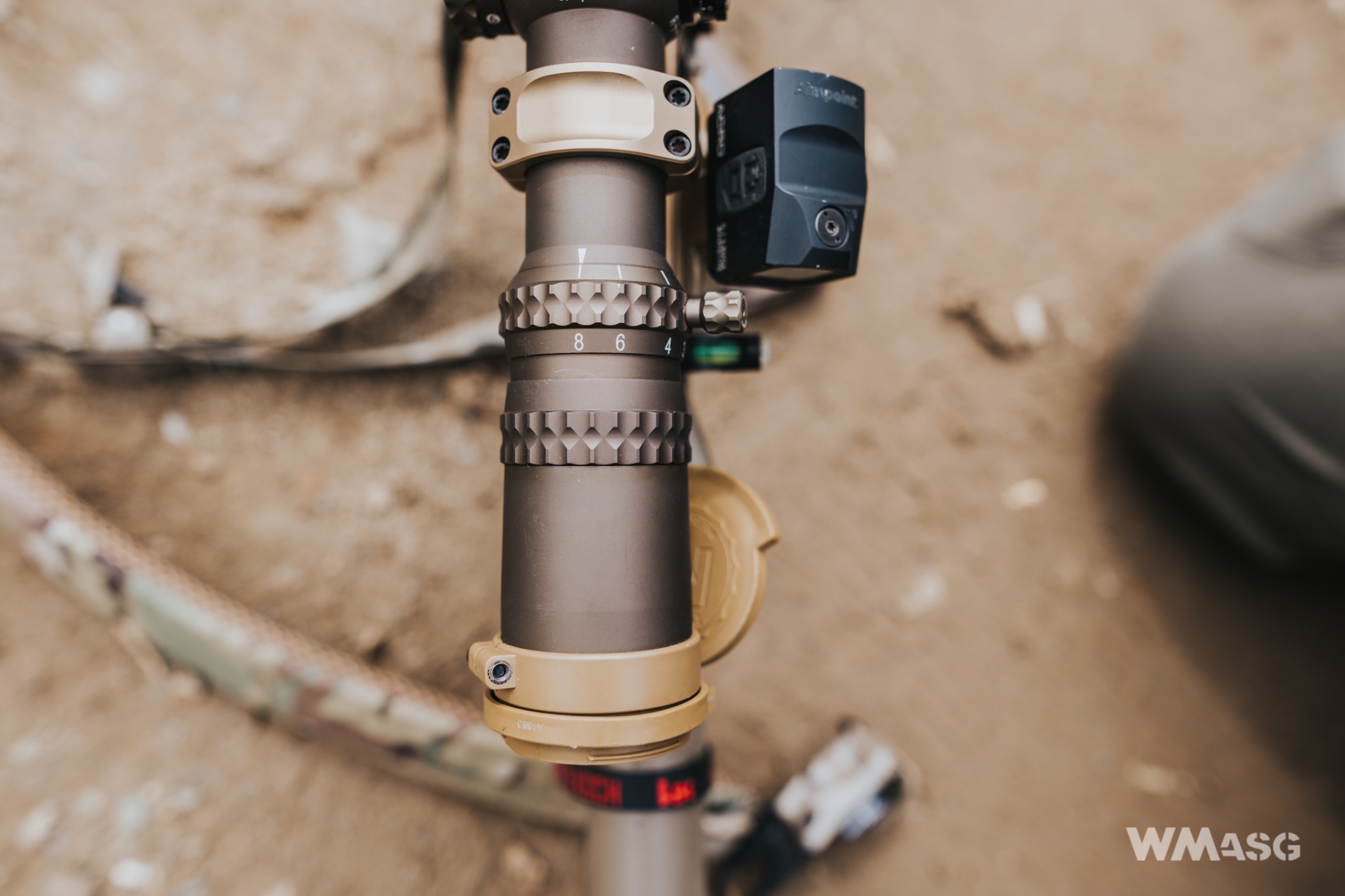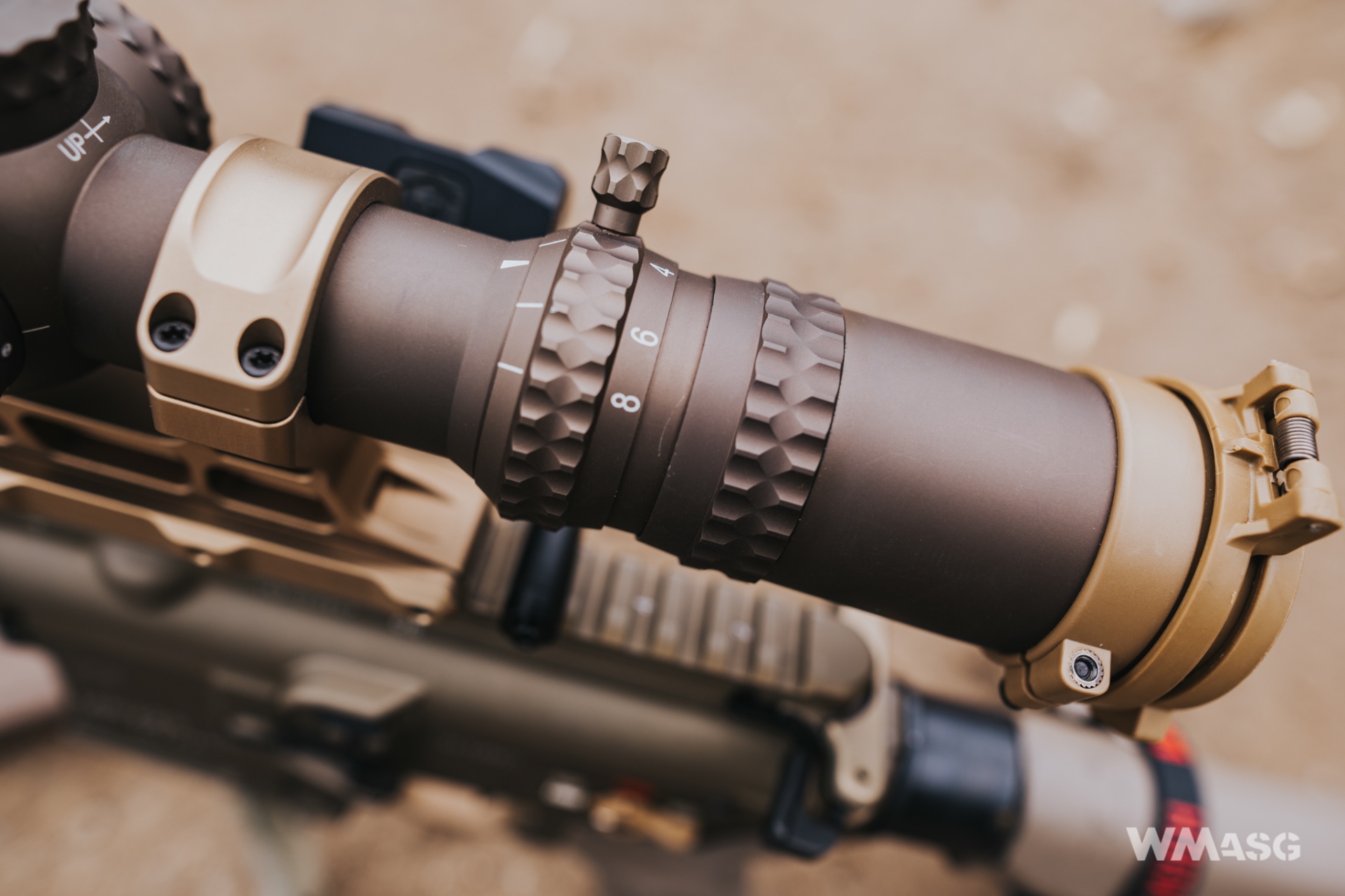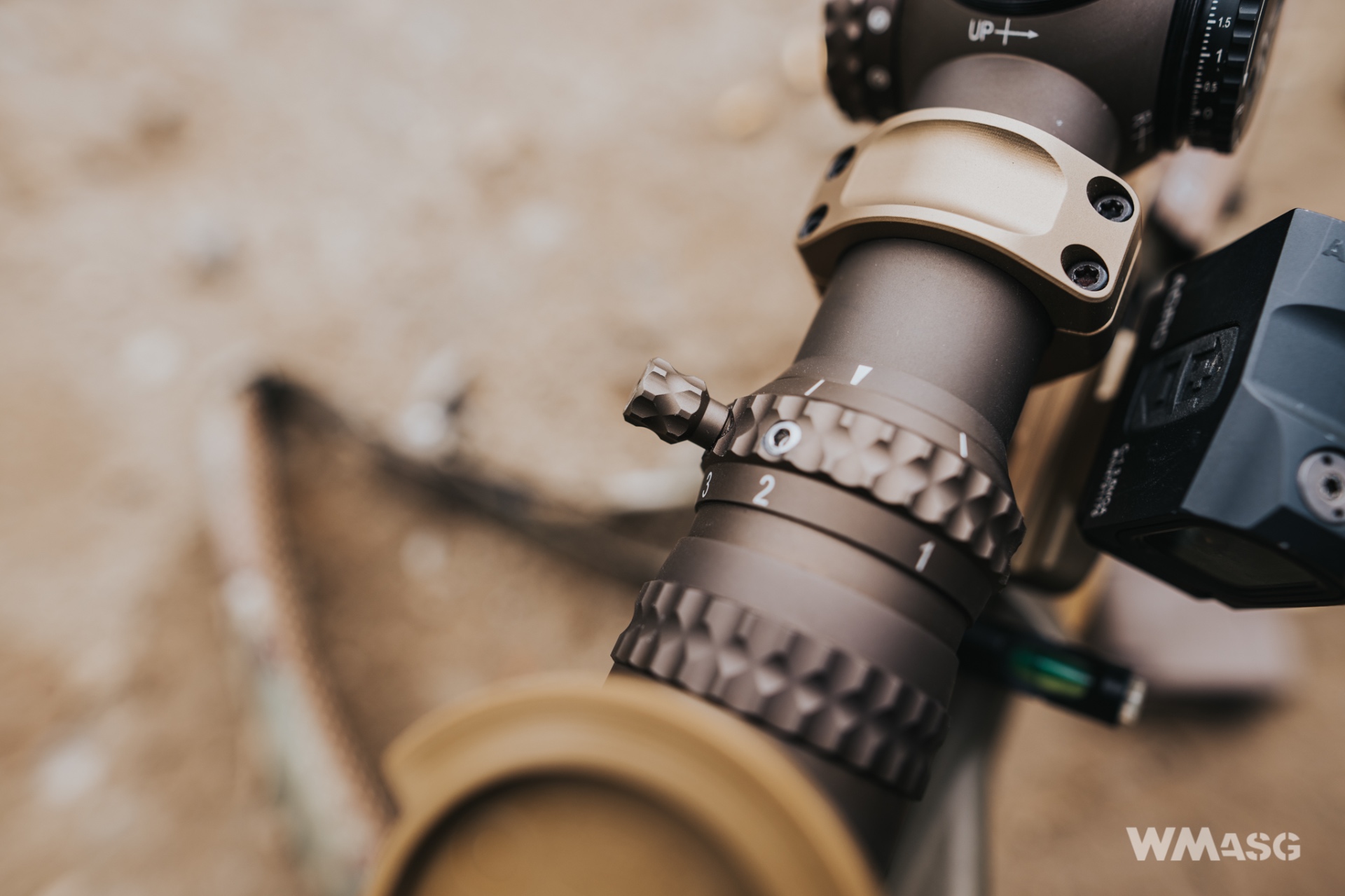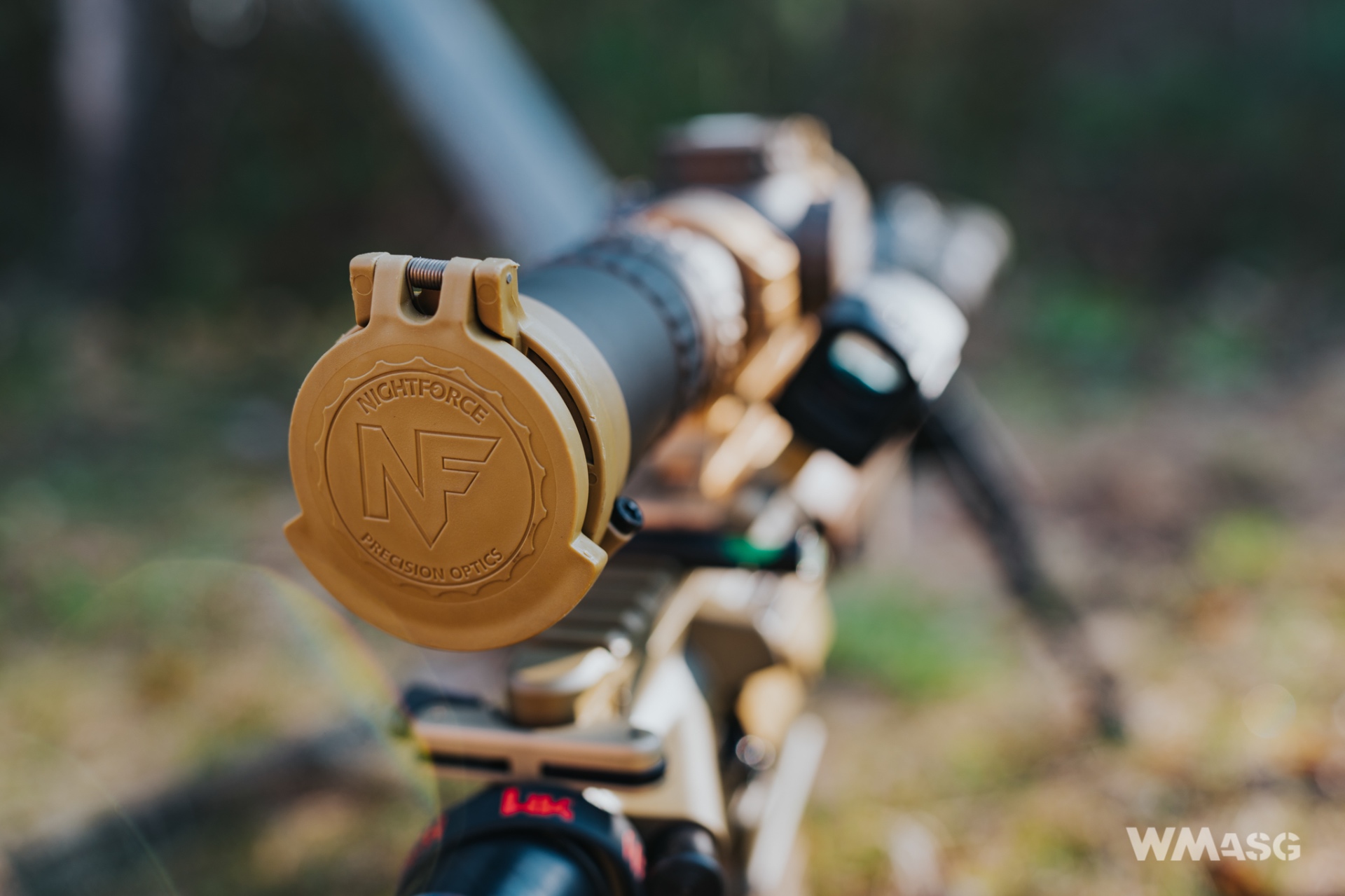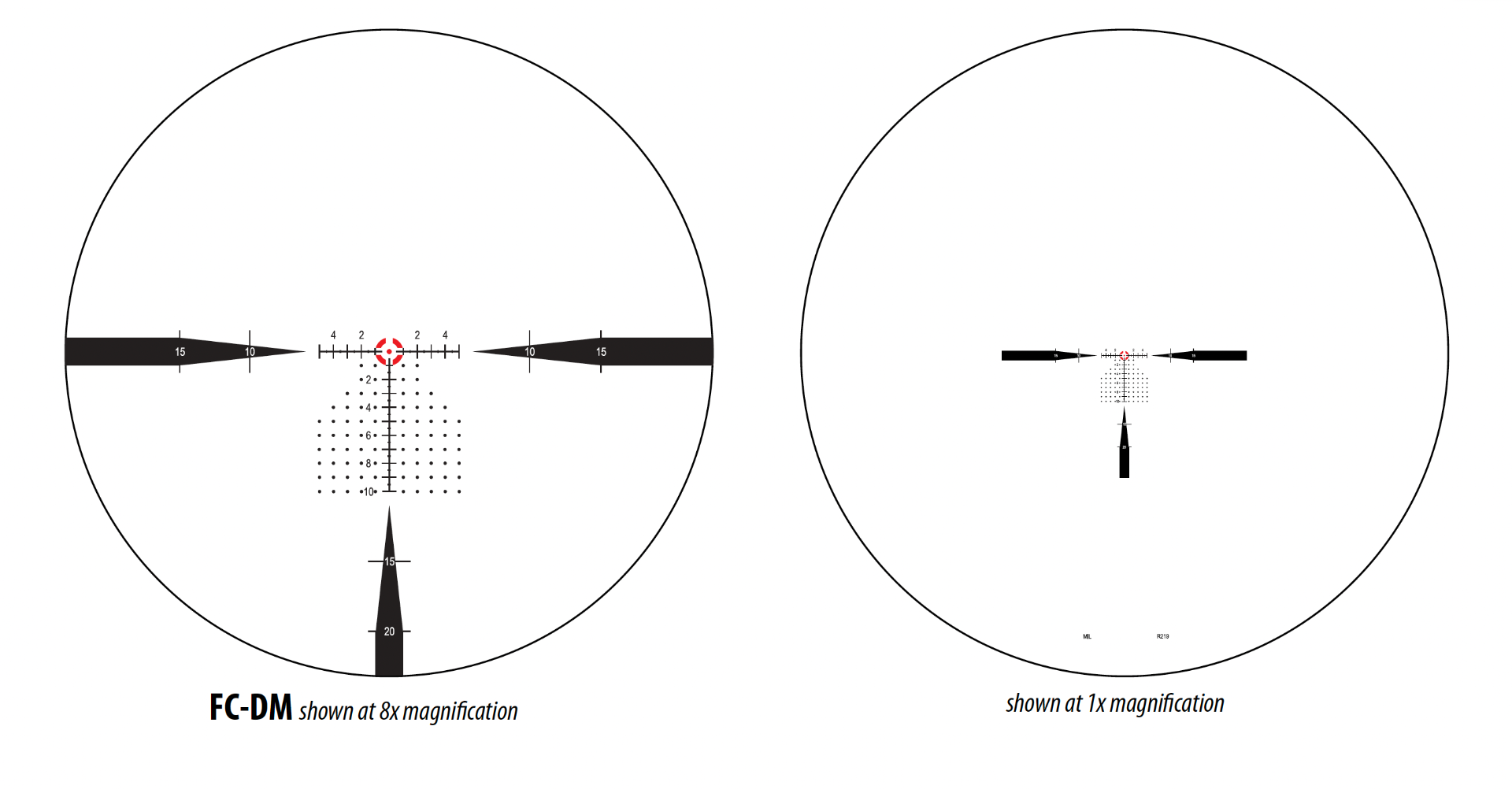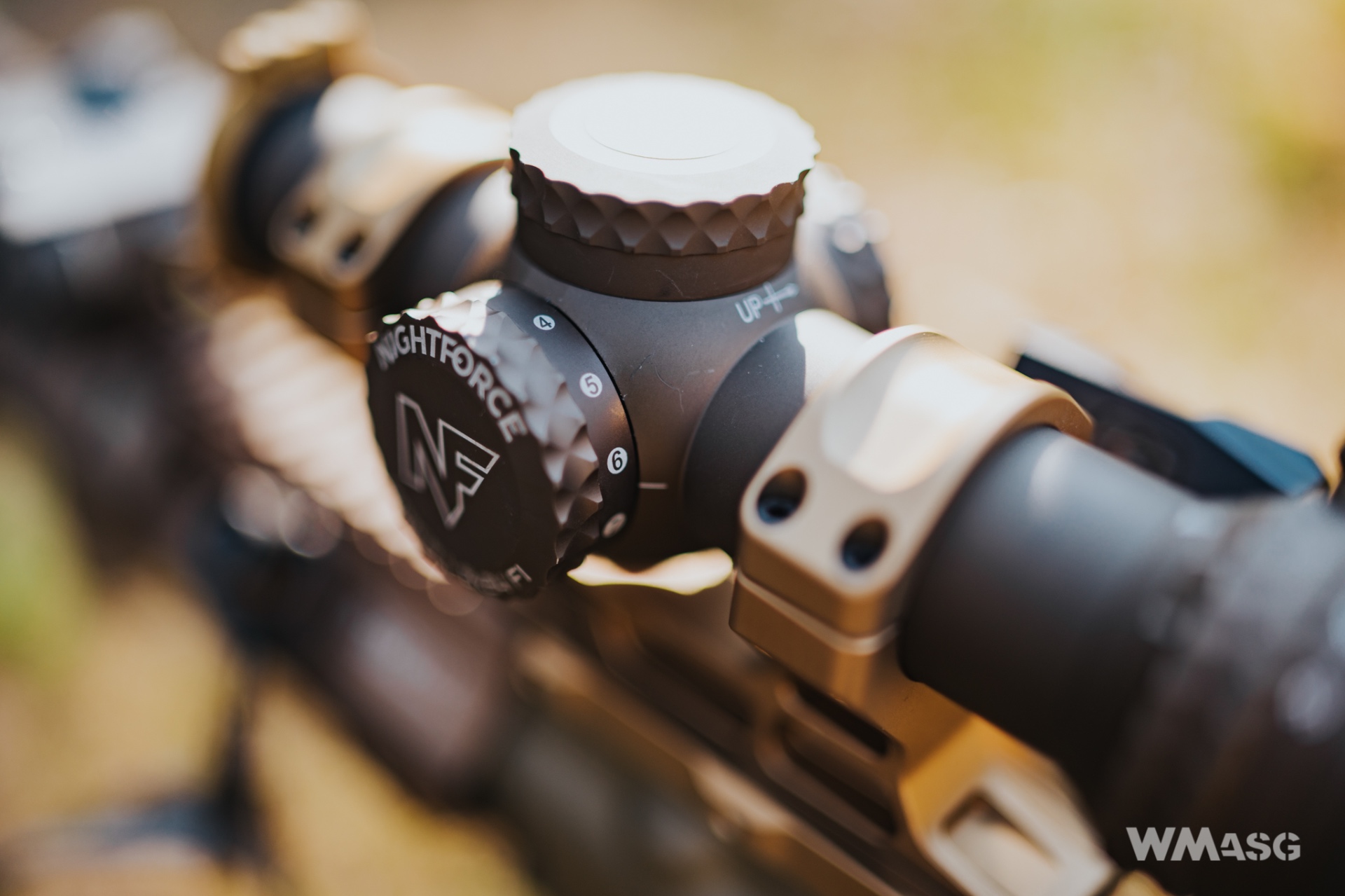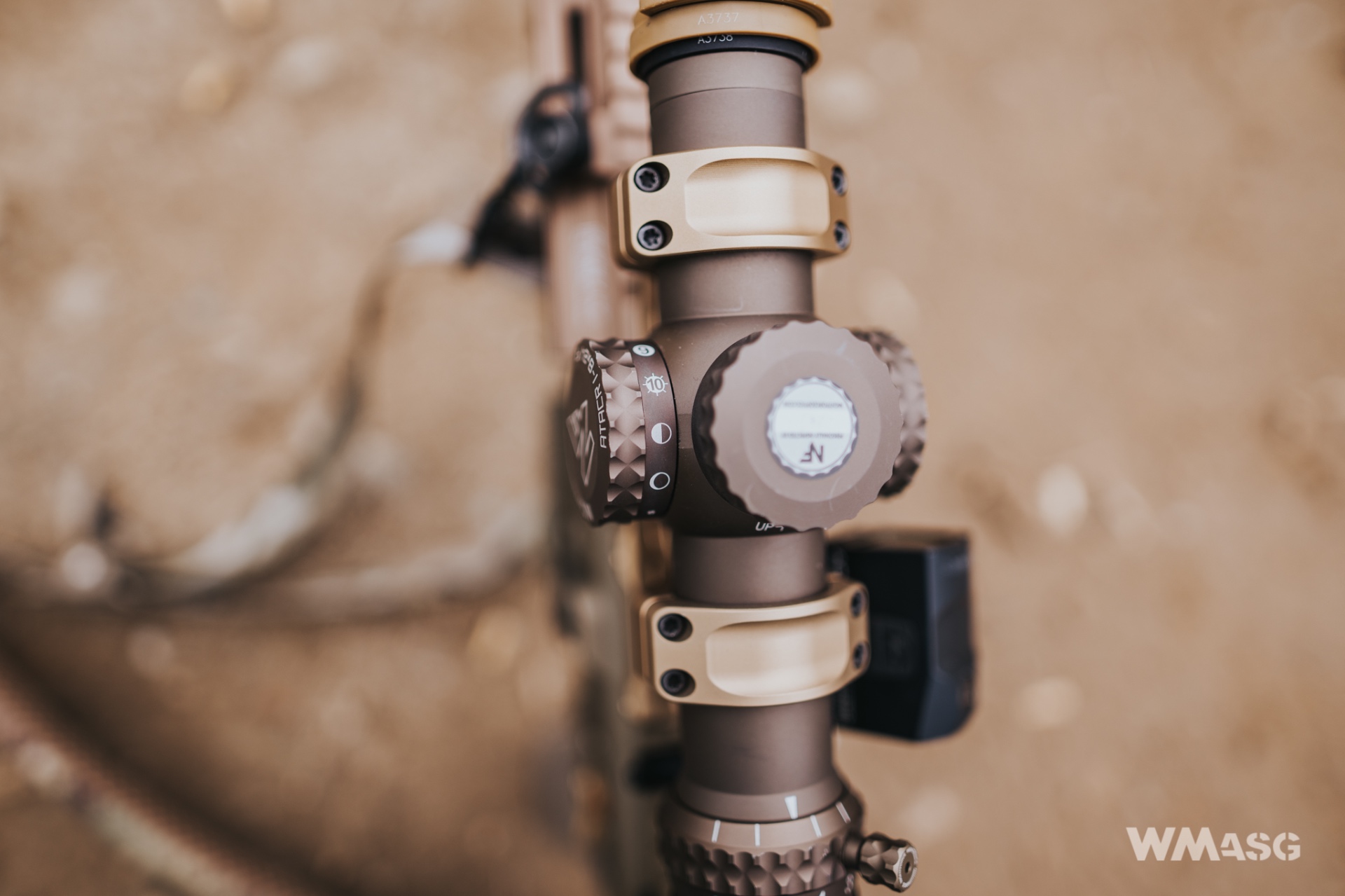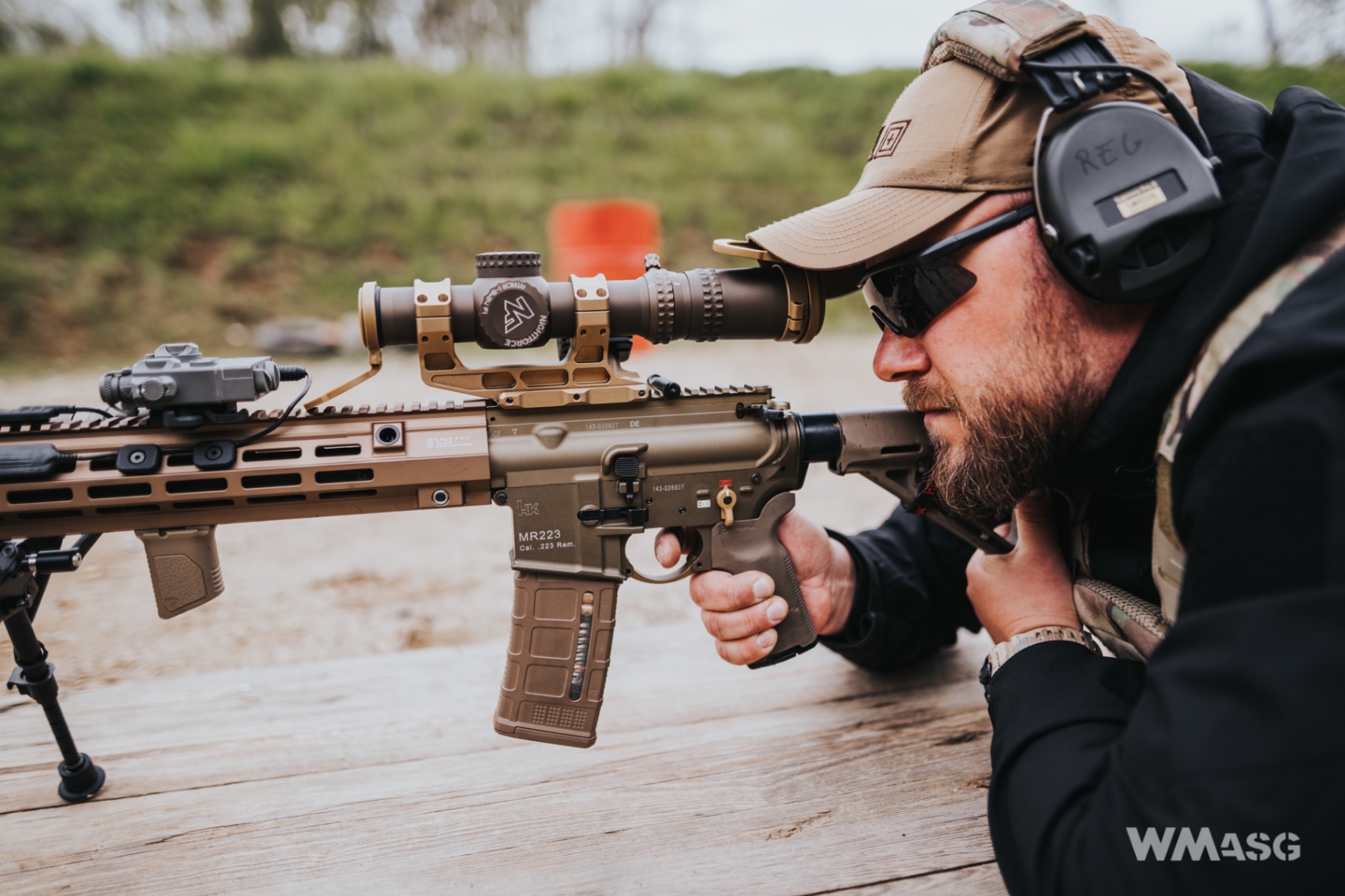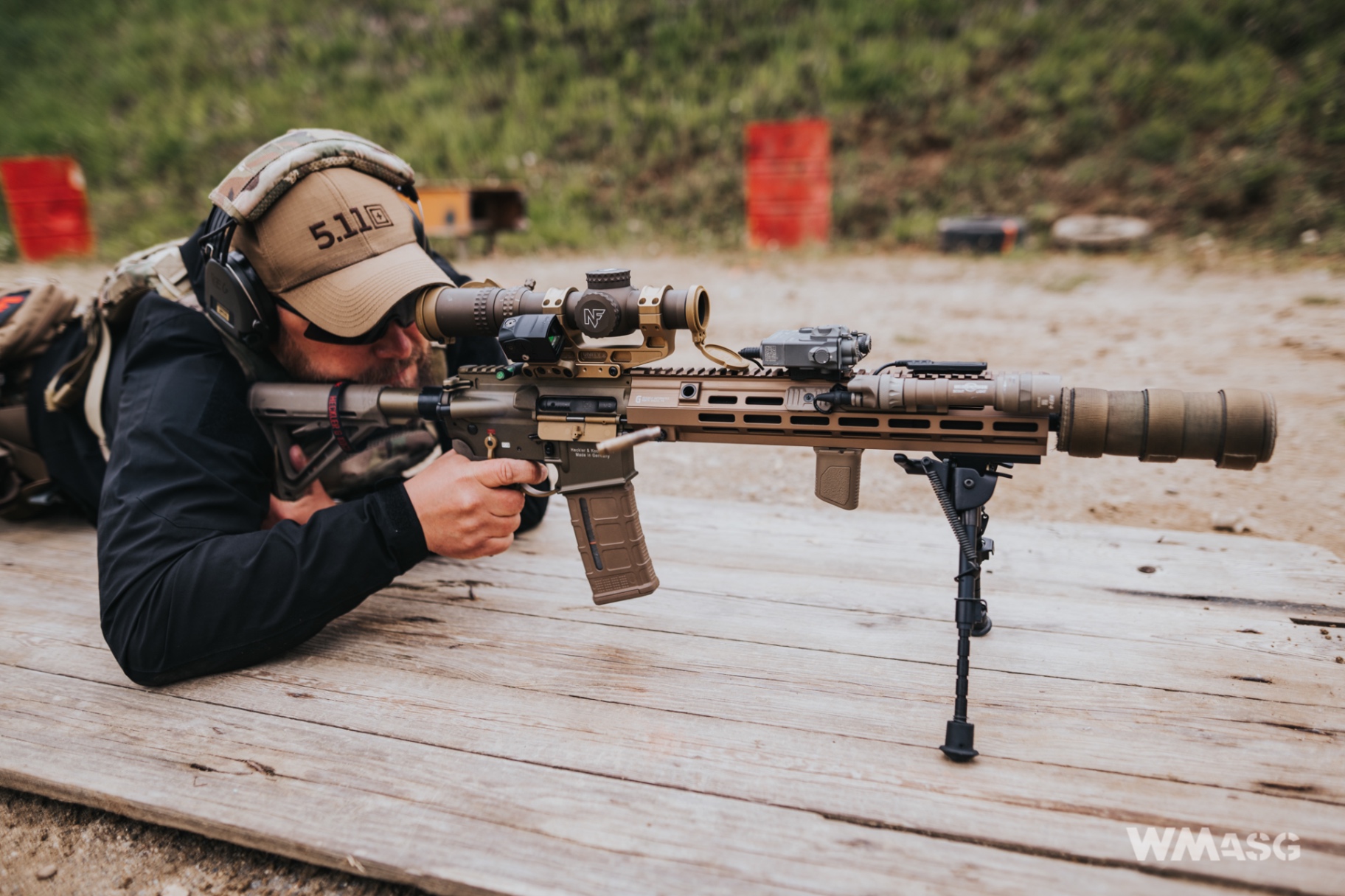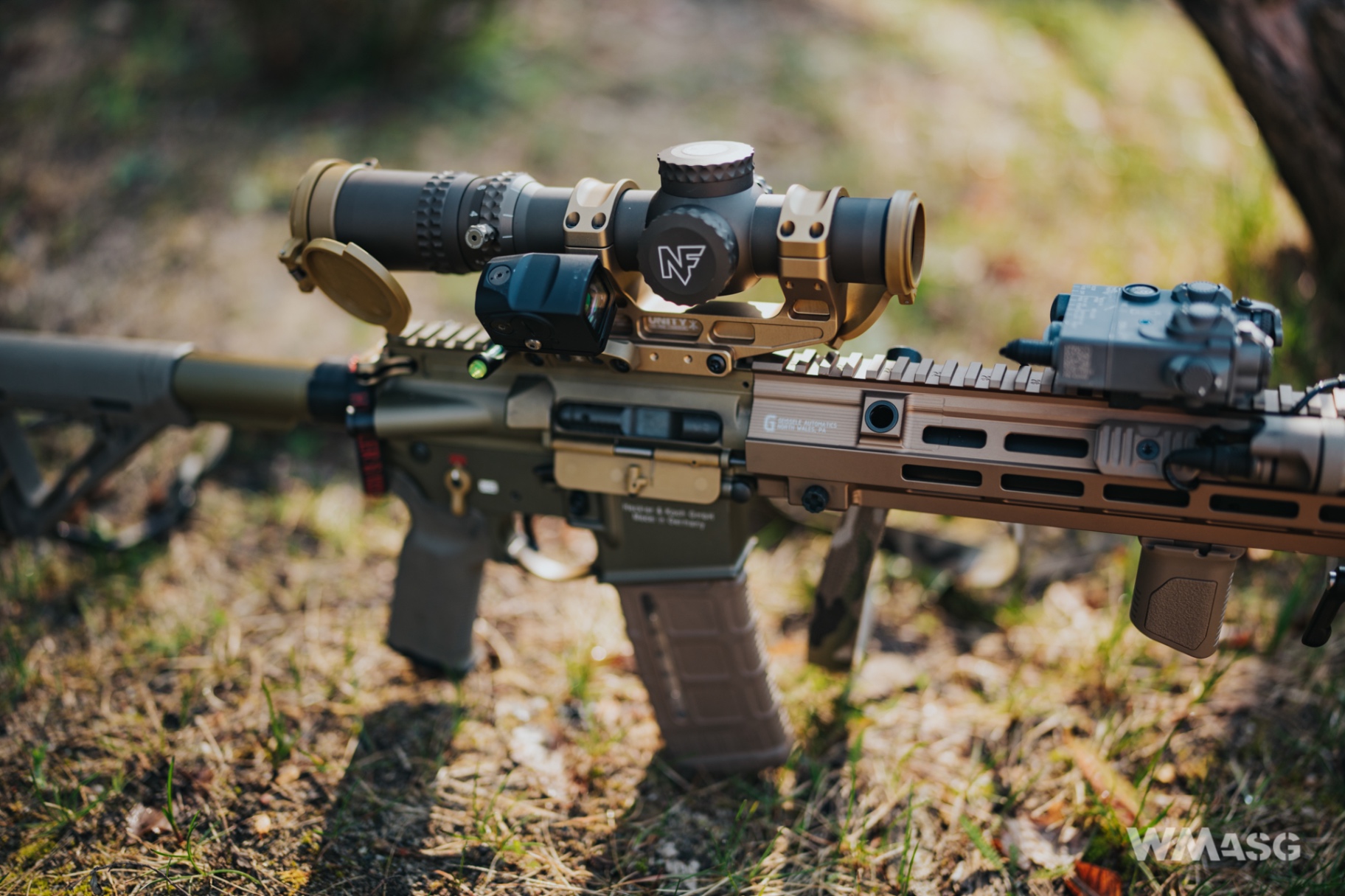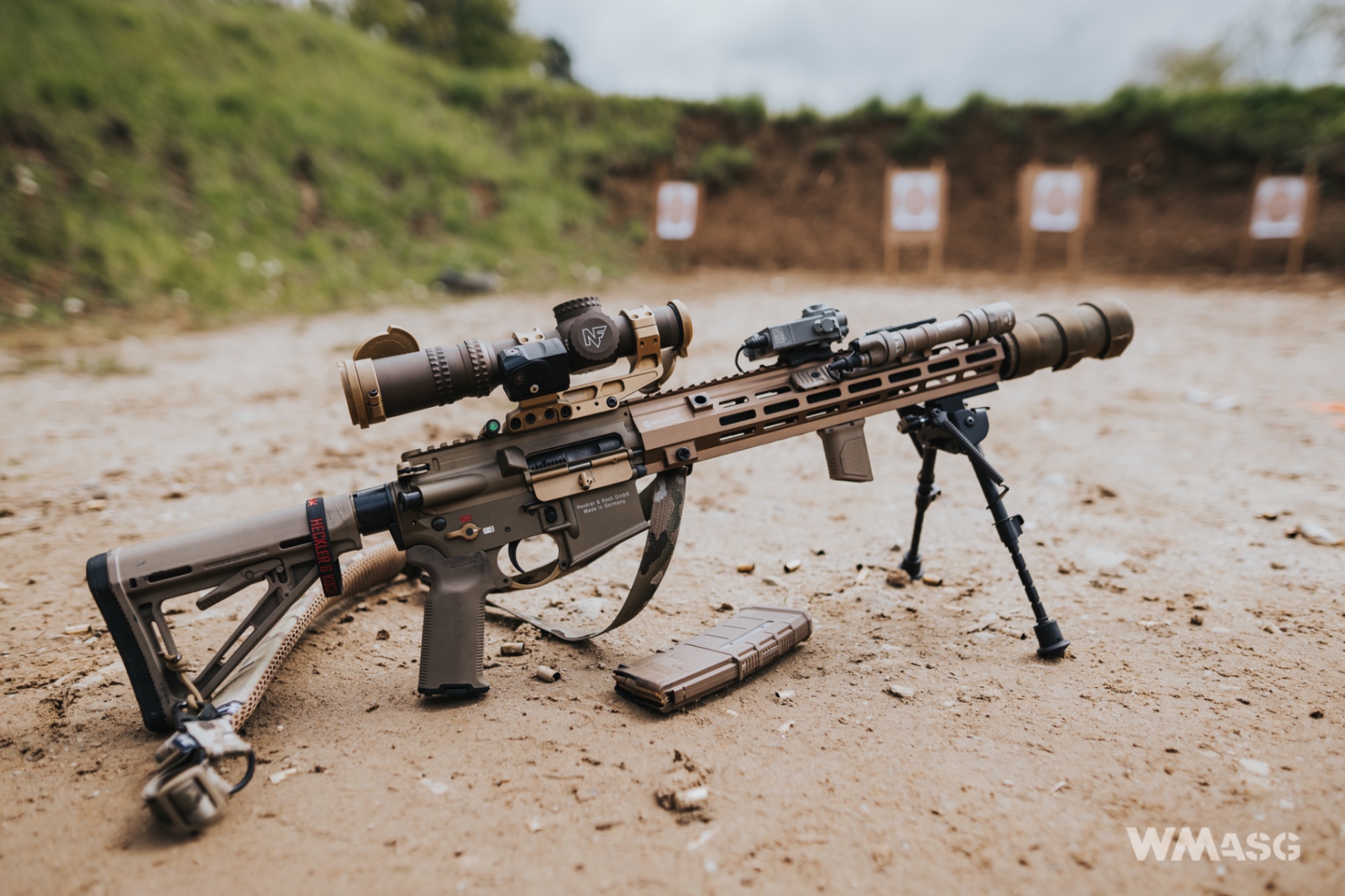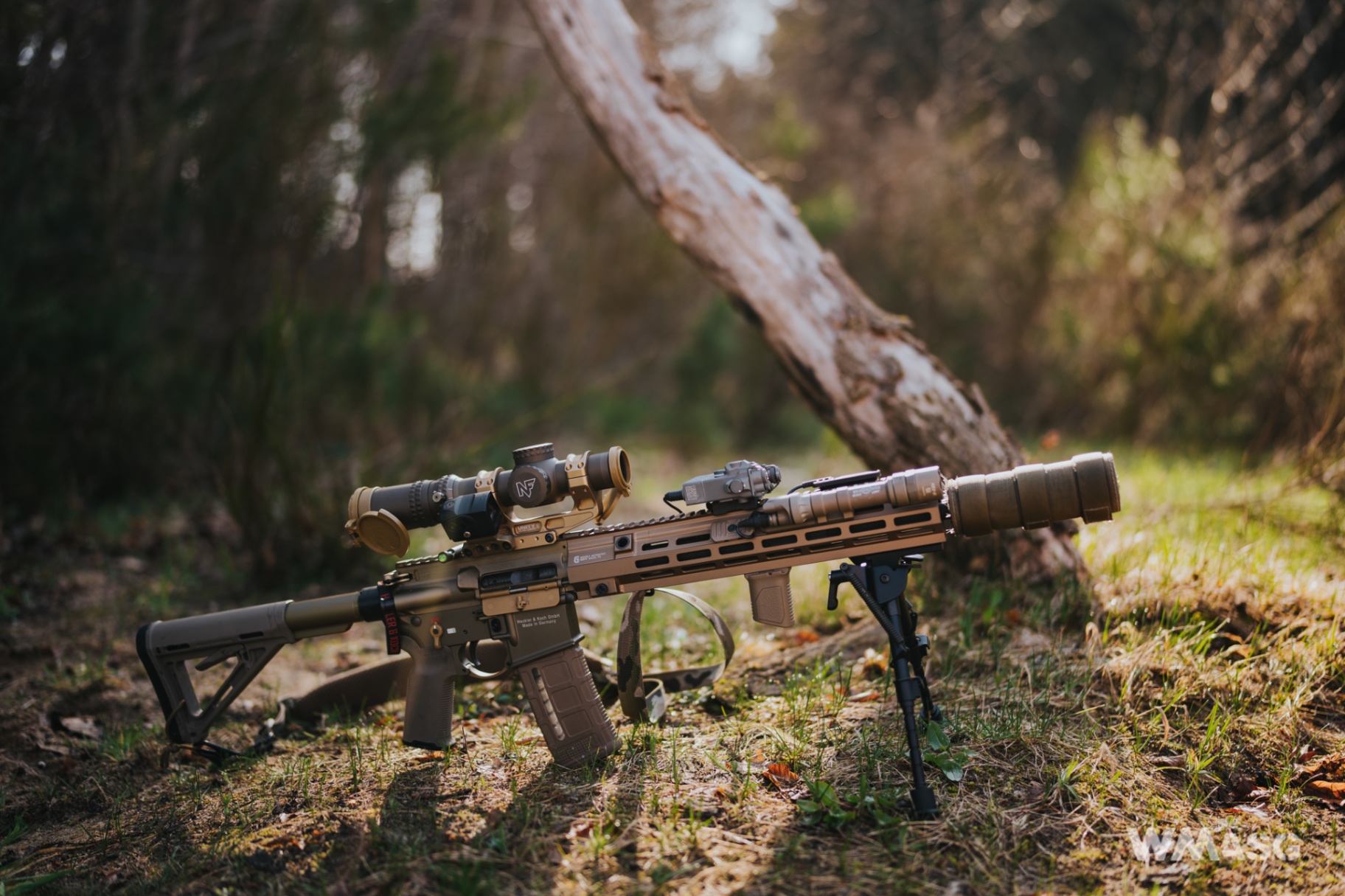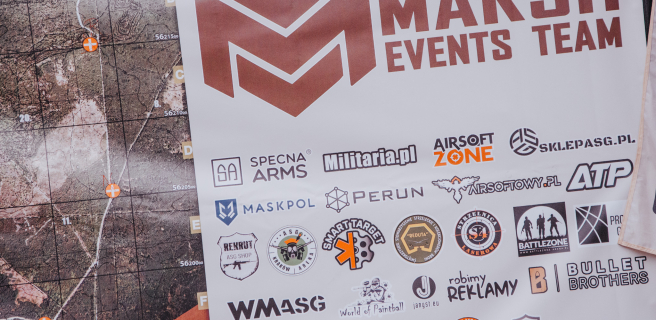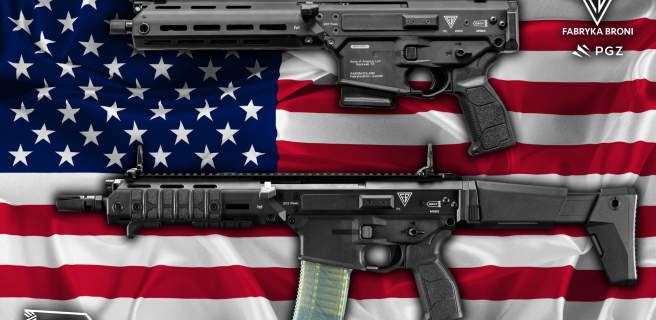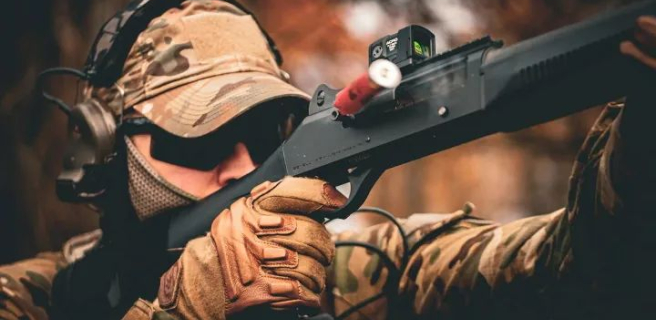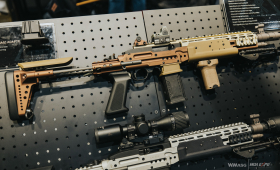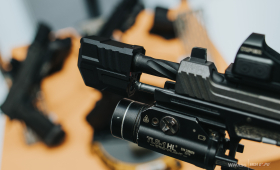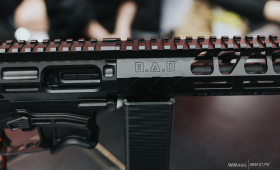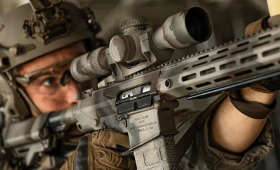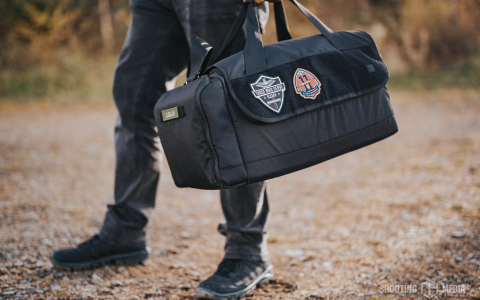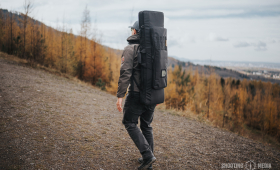What is an LPVO and how was it created?
Low Power Variable Optics, or LPVO are nothing new and have been known among hunters for a very long time. They have a very wide angle of view for both driven and stalking hunts, but so far they have not been a large segment in hunting optics. The first scope of this type is considered to be the Zeiss Zielmulti with 1-4x magnification introduced in 1922. However, in military (and sports) applications, LPVOs were not appreciated. It was only at the turn of the 1980s and 1990s that there was a growing demand for new optics for the American military (especially special forces), operating more frequently in built-up areas. At that time, the mainstay were red dot sights by Aimpoint (or holographic ones by Eotech) or the Trijicon 4x32 ACOG, which has fixed magnification, and then there were high-powered scopes. American military operations in Grenada (1983), Panama (1989) and the famous Battle of Mogadishu, Somalia in 1993 (better known through Riddley Scott's 2001 cult classic Black Hawk Down) showed the need to have the ability to quickly identify and attack targets at a variable distance, in the conditions that quickly change from open spaces to CQB (Close Quarters Battle) and back. Red dot sights made long-range combat difficult and fixed magnification scopes made it difficult to engage targets at short range. Therefore, the military began to look for a solution that could combine the red dot sight functionality with magnification of scopes.
Among LPVO users, despite their "universality", there are many that often use iron sights or a red dot sight (here the Aimpoint ACRO C-1) on an offset mount.
The first manufacturer to respond to market's demand was Schmidt & Bender, offering the 1.1-4x20 Short Dot model in the mid-1990s. History has shown time and time again that the war machine drives innovation, and this is how the standard of LPVO started to creted. Over time, it has become a common choice among civilian shooters, including those taking past in dynamic shooting disciplines that have been developing since the 1990s (such as, for example, 3-Gun). Overseas, LPVOs are considered "do-it-all" scopes, i.e. universal, for everything, especially for owners of AR-15 carbines. And the craze for those scopes continues.
Currently available LPVOs have a magnification range between 1x and 10x, usually 6x or 8x. They are dedicated for shooting at distances from 10 to 600 m. The user is supposed to comfortably observe a target at a longer distance and still comfortably handle a weapon. Changing the magnification is usually done by turning the eyepiece ring or the entire eyepiece module, as in the scope described below.
LPVO types
There are two types of LPVOs: the so-called FFP (First Focal Plane) and SFP (Second Focal Plane). The first ones have the reticle in the foreground, i.e. in front of the lenses and the second ones the background, i.e. behind the lenses. In the case of the latter, this results in rescaling of the reticle as the magnification changes. For this reason, FFP scopes are considered better, where the reticle enlarges proportionally to the magnification, while maintaining its parameters, which is important when making corrections when shooting. Usually, however, extreme magnification settings are used and as long as the reticle is calibrated for maximum magnification, the owner of an SFP scope should be able to use it correctly. Moreover, in some FFP scopes when 1x magnification, the reticle scale is almost invisible as it is supposed to be used like a red dot sight, that is to aim quickly.
In an LPVO, the field of view in both settings and the distance from the eye required to take a well placed shot are also important, as the whole idea of an LPVO is to be able to aim it quickly. At maximum magnification, the field of view should also provide the ability to clearly observe a target.
The ATACR or Advanced TACtical Riflescopes
If you just want to read the review of the Nightforce ATACR 1-8x24mm F1, go to the next paragraph.
Nightforce's motto is "Rugged, reliable, repeatable", which is actually reflected in the image of the products of this brand. Nightforce scopes are considered one of the best and "toughest" in the world. To prove this, every year at the Shot Show, a scope is struck against a table multiple times and at different angles to prove that it will always keep its "zero". There is a known case of a Nightforce scope being shot through with a 7.62x39 mm bullet, which, despite the loss of magnification, still maintained its "zero". Before the scopes are delivered to the customers, they undergo thorough and rigorous tests (the manufacturer even writes about fanaticism here) and on each one we find an individual number with the signature of the tester. The manufacturer provides a limited lifetime warranty for its scopes, which in this case seems to be a courtesy.
The founder of Nightforce is Raymond Dennis from Australia, who was once looking for a scope that would meet his needs for spotlighting in Australia. Since he couldn't find a sufficiently bright and precise optics for himself, he created the Nightforce brand in cooperation with a Japanese manufacturer, which conquered the American in 1992 and the rest of the world soon after. In 1998, the company moved to its current location in Orofino, Idaho (USA). Two years later, Nightforce scopes began to appear in the US armed forces, when in 2010 Nightforce finally won a contract worth USD 25.8 million to supply scopes for the U.S. Army, US Navy, US Air Force and Marine Corps special forces.
The Nightforce ATACR 1-8×24 scope is the youngest "child" of the flagship ATACR family (Advanced TACtical Riflescopes), which has been present on the market since 2003. The LPVO reviewed in this article was presented during the Shot Show in 2018 in Las Vegas (USA) next to the cheaper, smaller in diameter, but also slightly shorter and lighter NX8 1-8×24 model. Then, as we can read in the press materials, in 2019 the Nightforce MIL-SPEC ATACR 1-8×24 F1 scope was selected as a "team scope with variable zoom with a reticle in the foreground" in the USSOCOM Miniature Aiming System-Day (MAS-D) Optics program. It was emphasized that the scope is designed to be compatible with current weapon models and those that may be used in the future by US Special Operations Command.
The Nightforce ATACR 1-8x24mm F1 FC-DMx scope
Nightforce scopes are hard to ignore. They make a strong impression from the first glance. Upon closer inspection, this impression only intensifies. It was a similar case with the ATACR described here, especially the one in the Dark Earth (DE) color recently introduced to the civilian market. Depending on the lighting, the shade of this color can even fall slightly into Ranger Green. The anodized coating is durable and just looks great.
The scope is machined from a single block of 6061-T6 aircraft grade aluminum and weighs 595 g. The tube and the lens with a diameter of 34 mm affect the high brightness of the optics, but also provide a large range of reticle adjustment. Not without significance is the small scope length of 255.5 mm (with a mount length of 144 mm), which saves space on the accessory rail of AR-15 family carbines, for which the scope has been designed. It is currently the most compact and lightest premium LPVO scope. The difference isn't huge, but it's still there.
Using multi-coated ED (Extra-Low-Dispersion Glass) in 24mm lenses, the ATACR provides very high light transmission, excellent image sharpness and contrast in a wide range of conditions, including low light. During the preparation of this article, I asked several people for their opinion, and each of them immediately drew attention to the clarity of the image.
The ATACR's field of view at 100 meters at 1x magnification is 32 m, and at the maximum magnification of 8x the field of view is almost 4.5 m, which is above average for an LPVO from this price shelf. At 1x magnification, there is a slight fisheye effect visible, but until someone pointed it out to me, I didn't even notice it during use.
Unlike other scopes in the Nightforce ATACR series that have a bit more magnification, the parallax is not adjustable, which is a common characteristic among LPVOs. Here, the parallax has been set permanently at 125 m (in competing models, this range varies from 90 m to 150 m). Due to the ATACR series being designed for dynamic combat and sport shooting (not target shooting), it should be assumed that the calibration for such a distance was considered optimal.
Turrets - scope zeroing
Nightforce's characteristic "toothed" turrets draw immediate attention. The upper one is used to correct the elevation, and the turret on the right side is used to correct windage. After unscrewing "toothed" lids with the distinctive NF logo, the actual very low profile turret appears. Both of them have click adjustment at every 0.1 MRAD, with a clear scale marked every 0.5 MRAD. A full turn is 12 MRAD. We can adjust the reticle up to 30 MRAD in both planes. In a scope of this class, the repeatability of the turret's work is usually the norm, but since it is not in every scope, it should be mentioned that each time we reset the settings, we actually return to the original point of impact.
After zeroing the scope, to set the "zero", we need to loosen the two screws with the supplied 5/64" (2 mm) Allen key, turn the turrets and secure them by tightening the screws again. It is worth paying attention to tightening them evenly. Also the greater the pressure, the more force will have to be used to adjust the setting on the turrets, but it also gives the ability to protect the exposed turrets from undesired changes of settings. The set also includes rings to protect the threads against dirt when we want to use the scopes without caps on the drums. Unlike the higher power scopes, in the ATACR line there is no Zero-Stop function.
Lenses
The large eyepiece, with a diameter of 46 mm, is designed to facilitate quick and easy aiming at a target which, in combination with the Power Zoom Ring and the Power Throw Lever (depending on one's preferences, it can be detached) responsible for adjusting magnification, it will work both at a long and short distance, giving the possibility to quickly change the magnification. The pressure of the ring is adjusted by tightening or loosening the 5/64” (2 mm) Allen screw. The factory setting is the lightest, which does not mean that there is no need to apply force to change the magnification. Despite this, the ring moves smoothly and can be changed very quickly if necessary. The eye reliefis 95 mm, which places this scope at the forefront of its group. Indeed, ATACR is a forgiving scope and allow to aim comfortably and quickly, without wasting time looking for the full picture. In my subjective opinion, it is the most comfortable scope among the models available on the Polish market.
For people with visual impairments, the manufacturer has provided diopter adjustment. To adjust the scope to one's eyesight, unscrew the locking ring and turn the loosened eyepiece to find the optimal setting. While testing this element, I realized that I can't go back to the factory setting. Some kind of a marker would be useful here. However, this is usually only set once and only when needed.
The reticle and its illumination
All ATACR series scopes are of the FFP type, meaning that they have reticles in the foreground. The reticle used in this model is called the FC-DMx and is derived from the Horus Ballistics reticle. It provides the full advantege to make corrections in changing weather and ballistic conditions. Based on the information collected from soldiers, it was decided to use milli radians as a more intuitive, universal unit for different calibers and one that is faster to convert to make the required corrections.
Reticle diagram of the Nightforce ATACR - 1-8x24mm F1 Manual
The reticle itself is very clear and readable. At full magnification, it allows for precise shot corrections of up to 10 MRAD for the elevation altitude and 5 MRAD for windage. Additional markings on the reticle allow to take an additional correction up to 20 MRAD vertically and 15 MRAD horizontally. Only the central field of the reticle is illuminated, which covers 2 MRAD, that is less than 2 cm per 100 m. At first I saw this as a disadvantage, but I realized that lighting up the entire reticle would only distract the shooter unnecessarily.
At 1x magnification, the ballistic portion of the reticle is practically unreadable. What we see are basically three sharp "posts" (right, left and bottom) and a central, illuminated "point", which consists of a segmented circle. In practice, the reticle is very intuitive, "quick" and pleasant to aim. When using magnification, the whole thing also allows to comfortably focus on a given target. Because the reticle lines are 0.06 MRAD thick, they are clear enough without obscuring the target.
On the left side, symmetrically to the turret on the right side, there is a dial for setting the illumination of the reticle. There are 10 levels of daylight illumination and two for night vision device to choose from. The night vision option is not infrared, but just a very weak illumination of the central segmented circle. Daylight illumination is visible in all conditions, including strong sunlight.
The knob moves smoothly, with a clear and pleasant click at each subsequent position. Any intermediate position turns the illumination off. The scope does not have an auto-off function, something that has to be kept track of. The CR2032 battery is responsible for the power supply which, according to the manufacturer, provides 29 hours of operation at maximum illumination setting and up to 140 hours with lower battery power consumption.
I was surprised by the lack of a choice of the reticle illumination color (red or green) present in other models of the ATACR series. This scope's illumination is red, which is not bad in itself, but the choice is available in every other scope of this line...
Summary or why does it cost so much?
I assembled my carbine using the "tactical approach" (its just my taste, can't help it) so the choice of optics was quite limited and mostly consisted of high end models. At the same time, I wanted to have a universal carbine that would allow me to shoot dynamically and at a bit longer distances. My HK MR223 with a 14.5'' barrel should theoretically allow me to easily hit a medium-sized gong up to 500-600 m. Ultimately, I decided that an LPVO scope would give more possibilities and fun than a "red dot" with a magnifier when I want to do some precise shooting. This is how I accidentally created the RECCE "project". Whats more, the scope will also remain functional when the battery dies.
While deciding on an LPVO in this price range, I wanted to be sure that it won't be one that I will have to be extra careful with. In addition, due to the general weight of civilian HKs, I was looking for the most compact and lightweight scope. Talking all into account, from my list of 6 competing scopes, the Nightforce ATACR 1-8x24 F1 turn out to be the one I bought. The final decision, however, was made a year ago, after scopes in the new Dark Earth color, previously reserved for MIL-SPEC, were to be shipped to Poland. The aesthetics of the ATACR was also important, because my HK is in the RAL8000 color. This way, I became the owner of one of the first scopes to be distributed in Poland (thanks to the representative of Nightforce in Poland - Hubertus Pro Hunting).
The most important thing, however, is what can be seen through this scope. Among the LVPOs I have seen, the image in the ATACR was the most appealing to me. The sharpness, clarity and contrast of the image made observation and shooting the greatest pleasure (it makes an especially good impression in the evening). The reticle is easy to read and, at the same time, the thickness of the lines does not interfere with observation, and the side "posts" combined with the center of the reticle facilitate intuitive aiming at a target. What I miss a bit is one or two extra points visible at intermediate 3-4x magnification, facilitating a possible correction using incomplete zoom.
According to the instructions, the ATACR scope is to work regardless of the conditions in which it will be used in. No additional precautions are needed in either extreme temperatures, salty sea air or at high altitudes. It is resistant to dust, mud, snow and strong impacts, not to mention shocks. This is partly because NightForce scopes are immersed in a pressurized tank equivalent to 100 feet underwater for 24 hours during production, making them completely waterproof.
The Nightforce ATACR 1-8x24 scope appeared on the market together with the NX8 model, which sell for half the price. Currently, both scopes are available in two colors: black and Dark Earth. The ATACR is a bit heavier and more massive than the NX8 (by 100 g), but thanks to the 34 mm tube it will be more durable than the NX8. The larger eyepiece with a diameter of 46 mm ensures more comfortable observation and faster shooting. The ATACR is also has a lower profile.
Is it worth it? Of course, provided you have the budget. And it's definitely worth paying more attention to. In this price range, the choice of a scope is determined by nuances. Despite the high price, the ATACR described here is not the most expensive "tactical" LPVO scope. Of course, there are many cheaper solutions (such as the aforementioned NX8) that will also do the job, but it is always a trade off. I believe that , whenever it is possible, it's better to spend your money once and do it well, than to face problems later. When, after the purchase, my excitement subsided, I still know that it was a good decision. The scope gives a lot of satisfaction and is comfortable to use. It will be a great choice for a universal, RECCE type carbine, meant for medium range and tactical competitive shooting. In addition, it looks good and, at least at the time of writing this article, is not a very common sight, so the owner will additionally stand out in the crowd.
To top thing off, a summary of the scope's technical data:
Reticle: FC-DMx, First Focal Plane (F1/FFP), 10 daytime illumination modes, 2 night vision illumination modes;
Magnification: 1-8x;
Lens diameter/outer lens: 24 mm/34 mm;
Exit pupil diameter: 1x - 11.26 mm; 8x - 3.19 mm;
Field of view (at 100m): 1x - 32 m; 8x - 4.4 m;
Eye Reliefe: 95mm;
Adjustment Range: 30MRAD Vertical, 30MRAD Horizontal;
Parallax Adjustment - Fixed at 125 m;
1 click adjustment: 0.1 MRAD;
Tube diameter: 34 mm;
Eyepiece outer diameter: 46 mm;
Mount length: 144 mm;
Weight: 595 g;
Overall length: 255.5 mm;
The set includes: flip lens caps, PTL (Power Throw Lever), Allen wrench, manual, lens cleaning cloth, full set of stickers.
Author's note: I've been thinking about writing this article for quite some time now, as with buying the scope described above itself. From the beginning I expected that the price will be "high" (which, IMHO is relative) and although it was not completely irrelevant, it played a secondary role in making the choice. I kept track of the shooting community, watched various scopes at fairs (Shot Show, IWA and in Poland) and events (Delta Optical workshops, Long Shot competitions, Light Infantry and others), thanks to which I had opportunity to get to know most of LPVO I am interested in (using the "tactical approach") available on the market before and after the purchase. In the meantime, I tried to collect as much information as possible both from available publications and from people whose knowledge and experience in long-distance shooting I respect very much (Jarosław Walczuk - thank you for the interview and Rafał Walczowski - thank you for the workshop). So by writing the above text, I hope that I have answered the question at least a little - what do you pay "so much" for when choosing a flagship tactical scope made by Nightforce. Currently, I'm thinking about another "project".
The text was created as part of commercial cooperation with Hubertus Pro Hunting - representative of Nightforce in Poland. As always, we have made every effort to ensure that the above article provides reliable information, and the advertiser never has influence over its content. It presents the author's opinion and does not close further discussion, to which we invite you in the comments.
Photos: Paweł Ciecielowski

